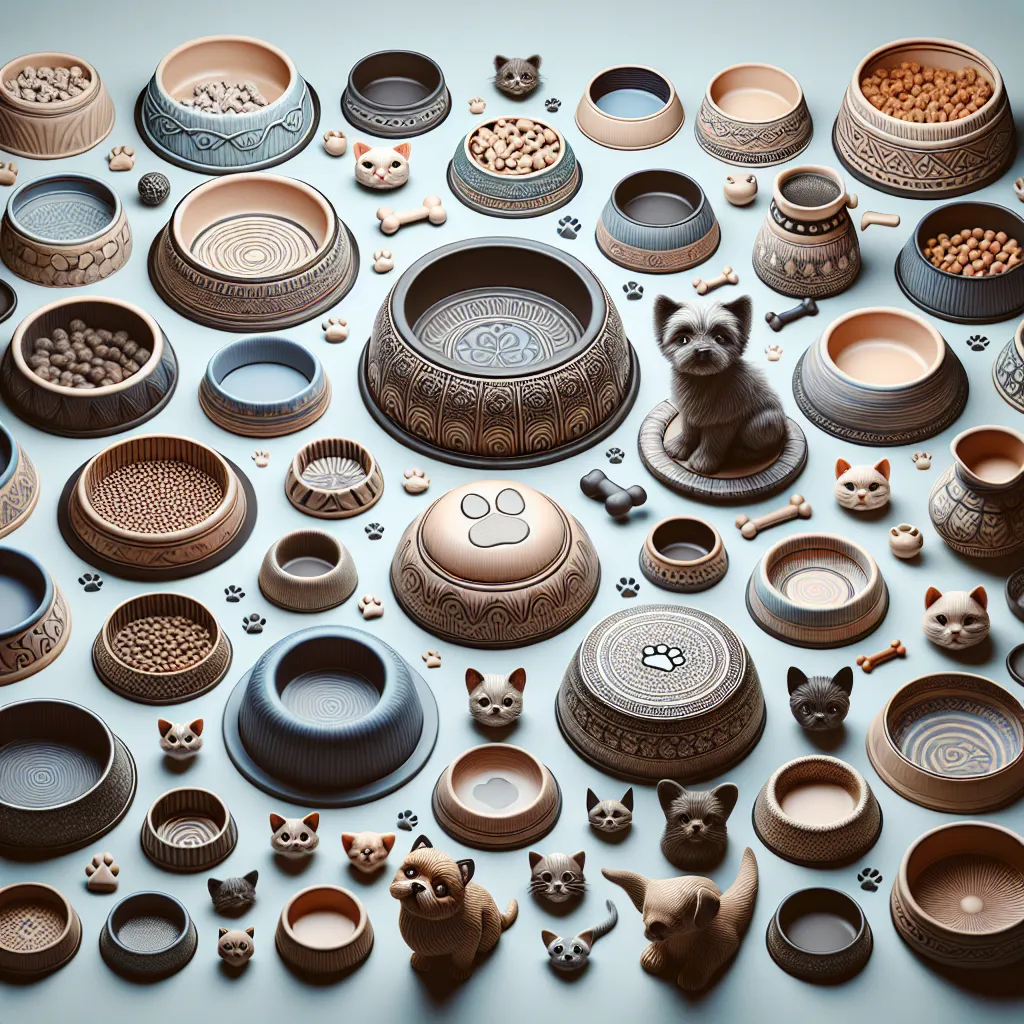Factors to Consider When Selecting the Correct Bowl Size for Your Pet
When it comes to choosing the right size and design for your pet’s bowl, there are several factors to consider in order to ensure the optimal dining experience for your furry friend. One of the crucial aspects to take into account is selecting the correct bowl size for your pet. Factors such as the size and breed of your pet, as well as their eating habits, play a significant role in determining the ideal bowl size.
For larger breeds, it’s essential to opt for a bowl that can accommodate an ample amount of food to satisfy their dietary needs. On the other hand, smaller breeds may require a bowl with a smaller capacity to prevent overfeeding. Additionally, considering the shape of the bowl is important, especially for pets with flat faces such as pugs or bulldogs, as it can impact their ease of eating.
Furthermore, observing your pet’s eating habits can provide valuable insight into the most suitable bowl size and design. If your pet tends to make a mess while eating or frequently spills food and water, a bowl with higher sides or a non-slip base may be beneficial in minimizing spills and maintaining a clean feeding area.
In conclusion, selecting the correct bowl size for your pet involves a thoughtful consideration of their size, breed, and eating behavior. By taking these factors into account, you can ensure that your pet’s dining experience is comfortable, enjoyable, and tailored to their specific needs.
Finding the Ideal Pet Bowl Design for Your Furry Friend
When it comes to choosing the right size and design for your pet’s bowl, finding the ideal pet bowl design for your furry friend is essential for their health and well-being. Specific considerations should be taken into account to ensure that your pet’s bowl meets their needs and enhances their dining experience.
One of the key factors to consider when selecting the ideal pet bowl design is the material. Stainless steel bowls are a popular choice due to their durability, ease of cleaning, and resistance to bacteria. Ceramic bowls are another option, known for their aesthetic appeal and weight, which can prevent tipping. However, for pets with a habit of chewing on their bowls, a heavy-duty plastic bowl might be the best choice to prevent damage and potential injury.
Additionally, the design of the pet bowl plays a crucial role in your pet’s comfort during meal times. Shallow bowls are ideal for breeds with smushed faces, such as pugs or bulldogs, as they prevent excessive strain on their facial muscles. Elevated bowls are beneficial for larger breeds or senior pets as they promote better posture and aid in digestion. Furthermore, non-slip bases are essential for energetic eaters who tend to push their bowls around during meal times.
Considering your pet’s specific needs and habits is crucial when selecting the ideal pet bowl design. By identifying the most suitable material and design for your furry friend, you can ensure that their dining experience is comfortable, safe, and enjoyable.
Tips for Ensuring Your Pet’s Bowl Meets Their Needs
When it comes to choosing the right size and design for your pet’s bowl, there are several tips to consider to ensure that your pet’s needs are met. Firstly, it’s important to select a bowl that is the appropriate size for your pet. A bowl that is too small can cause discomfort for your pet while a bowl that is too large may lead to overeating. Consider the size of your pet and their food portions to determine the right bowl size.
Additionally, the design of the bowl is crucial. For example, flat-faced breeds such as pugs or bulldogs may require a shallow, wide bowl to accommodate their facial structure and prevent breathing difficulties while eating. On the other hand, long-eared breeds like spaniels may benefit from a bowl with higher sides to keep their ears clean and dry during meals.
Furthermore, the material of the bowl should be safe and suitable for your pet. Stainless steel bowls are durable, easy to clean, and resistant to bacteria, making them a popular choice for pet owners. Ceramic bowls are another option, but they should be checked regularly for any cracks or chips that could harbor bacteria. Plastic bowls, while affordable, may not be the best choice as they can harbor bacteria and cause allergic reactions in some pets.
Considering these tips when choosing your pet’s bowl will ensure that their feeding experience is comfortable, safe, and tailored to their specific needs.

